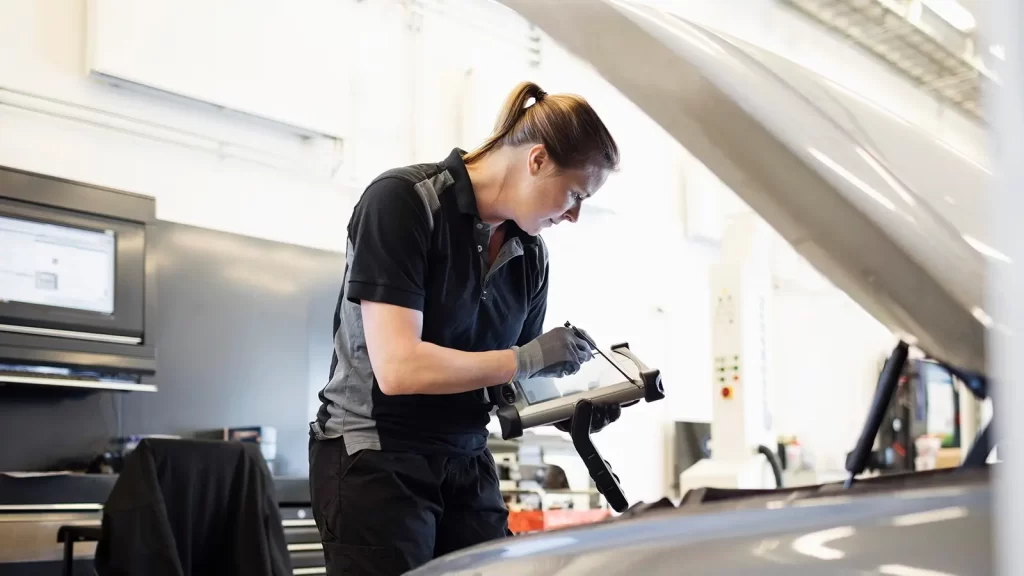A hybrid vehicle may seem a bit more complicated to maintain than a traditional gas-powered car. However, a few simple tasks can help ensure that your hybrid is safe and efficient.
For example, it’s important to keep a hybrid battery charged, and to make sure that the engine is warmed up before driving on cold days. We will discuss these and other tips to help you maintain your hybrid car.
Check the Battery
Hybrid cars can offer drivers with a lot of benefits, from saving the environment to getting better fuel economy. However, just like any other car, hybrids need regular maintenance to ensure they’re running well.
If you have a hybrid vehicle, there are several signs that its battery is starting to go bad. You may notice a humming noise that comes and goes while driving, or it may begin to charge at a slower rate than normal. In addition, the hybrid system warning light may be illuminated on your dashboard or you might notice a sudden drop in performance.
Fortunately, checking your hybrid battery is easy. Simply follow this link to use our health check calculator, which will quickly tell you the state of your hybrid’s battery and provide recommendations for next steps. The calculator is completely free, so you have nothing to lose by using it. In addition, you can always schedule an appointment with a service expert to get more detailed information.
Inspect the Tires
While hybrid vehicles use different components than traditional gasoline-powered cars, they still require many of the same routine maintenance items. Oil changes, fluid checks and tire replacement are just as important in hybrid vehicles as they are in traditional vehicles.
A car’s tires are a big part of how well it drives, and they need to be inspected regularly for wear and tear. Hybrids often feature low-rolling resistance tires which help them achieve optimal fuel efficiency, so ensuring that your vehicle’s tires are inflated to the proper pressure is vitally important.
Another tip for keeping your hybrid’s engine in good working order is to never leave your vehicle idling for extended periods of time. Doing so can significantly reduce your hybrid’s battery lifespan and impact its fuel efficiency. This is why it’s important to stick with the manufacturer’s recommended maintenance schedule and rely on an experienced hybrid professional for regular service.
Check Under-Car Fluids
With hybrid cars becoming increasingly popular on the road, it’s important to understand what maintenance they require. Unlike traditional gasoline vehicles, hybrids require different fluids to operate efficiently. In order to ensure proper function, it’s best to let a trained professional handle the necessary checks and services.
The internal combustion engine and electric drive motor in a hybrid work together, so if one malfunctions, it will impact the other. For this reason, it’s important to have your mechanic check the transmission fluid regularly to determine if you need a replacement or not.
Hybrids also have a separate battery that needs to be maintained and kept charged. While dealerships are often able to service hybrid batteries, we recommend taking your vehicle to a specialist. We have the equipment and knowledge needed to help you get the most life out of your hybrid battery. Contact us today for a service appointment.
Inspect the Engine
Although hybrids do not require as many services as regular gas-powered vehicles, it’s still important to follow the manufacturer recommended maintenance schedule. This includes oil changes, air filter replacement, and other routine inspections. It’s also critical to keep up with the proper tire pressure on hybrids, as they depend on low rolling resistance tires that provide optimal fuel economy.
Lastly, hybrids have complex electrical systems that may need to be checked and maintained. This can include the battery, regenerative brakes, and more.
During an under-car inspection, be sure to check for signs of corrosion around the internal combustion engine and battery pack. In addition, be sure to check the coolant level frequently. You will want to make sure the coolant is circulating properly and that it does not need to be replaced. You should also feel the rubber hoses to make sure they are firm and flexible, not rock-hard or cracked. Additionally, the inverter/converter system should not be overheating.


